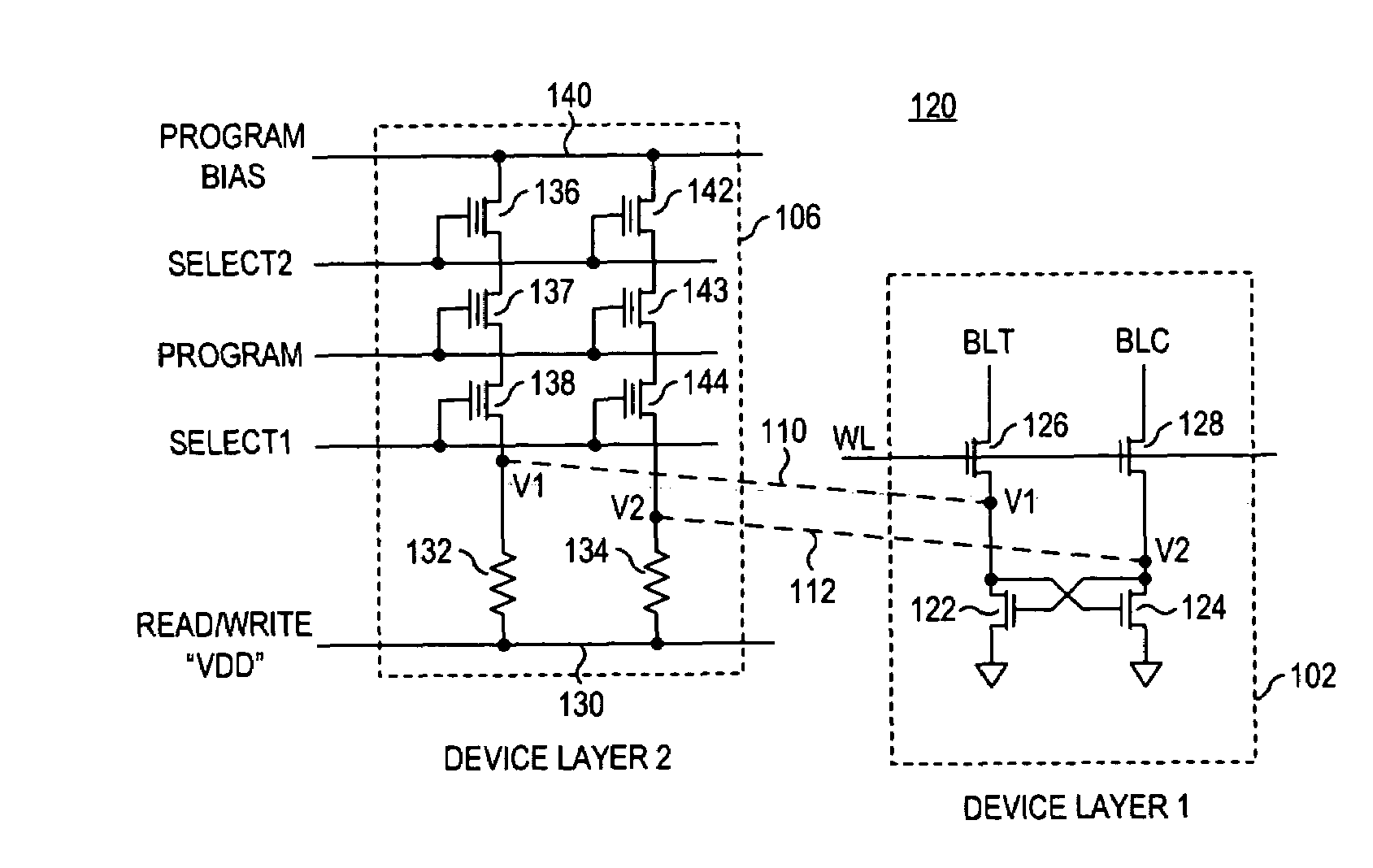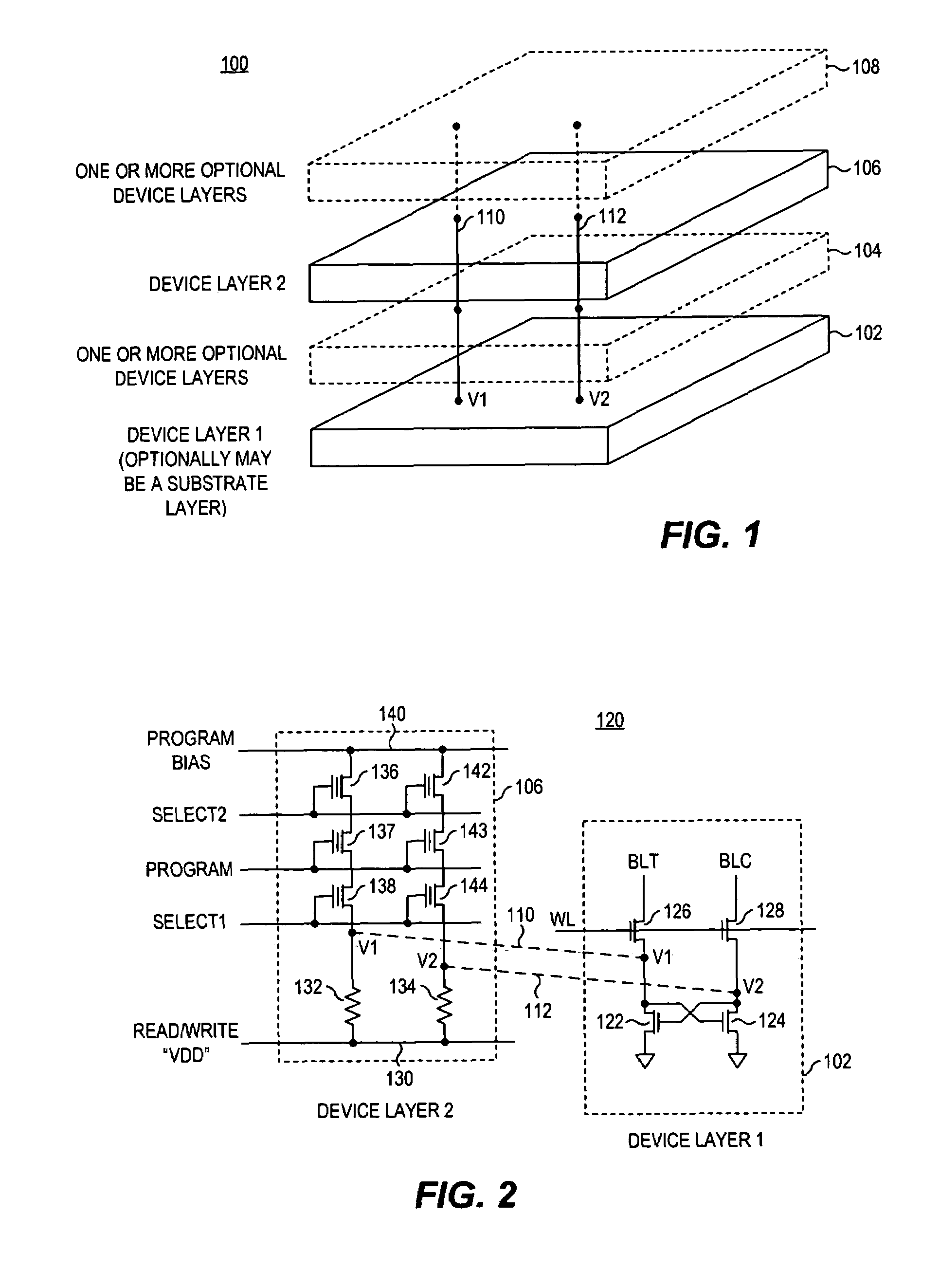Three-dimensional non-volatile SRAM incorporating thin-film device layer
a technology of sram and thin film, applied in the direction of static storage, digital storage, instruments, etc., can solve the problems of limiting the suitability of certain applications, the number of program/erase cycles, and other non-volatile technologies, and achieve the effect of low-cost memory devices
- Summary
- Abstract
- Description
- Claims
- Application Information
AI Technical Summary
Benefits of technology
Problems solved by technology
Method used
Image
Examples
Embodiment Construction
[0026]Referring now to FIG. 1, a structural representation is shown of a non-volatile memory cell 100 which includes a device layer 102 and at least a second device layer 106. One or more optional layers 104 may be disposed between device layer 102 and device layer 106, and one or more optional-device layers 108 may be disposed above device layer 106. Such a memory cell is suitable for fabrication in a monolithic integrated circuit. One of the device layers, such as device layer 102, may be a substrate layer, such as a semiconductor substrate device layer (e.g., one or more layers and features useful for forming a traditional silicon gate transistor upon a semiconductor substrate), although such is not required. Such device layers may also be formed of a thin film semiconductor layer, within which may be formed transistors, resistors, or other useful components. Informally, such a layer may be referred to as a TFT layer (i.e., “thin film transistor” layer) even though such a layer m...
PUM
 Login to View More
Login to View More Abstract
Description
Claims
Application Information
 Login to View More
Login to View More - R&D
- Intellectual Property
- Life Sciences
- Materials
- Tech Scout
- Unparalleled Data Quality
- Higher Quality Content
- 60% Fewer Hallucinations
Browse by: Latest US Patents, China's latest patents, Technical Efficacy Thesaurus, Application Domain, Technology Topic, Popular Technical Reports.
© 2025 PatSnap. All rights reserved.Legal|Privacy policy|Modern Slavery Act Transparency Statement|Sitemap|About US| Contact US: help@patsnap.com



